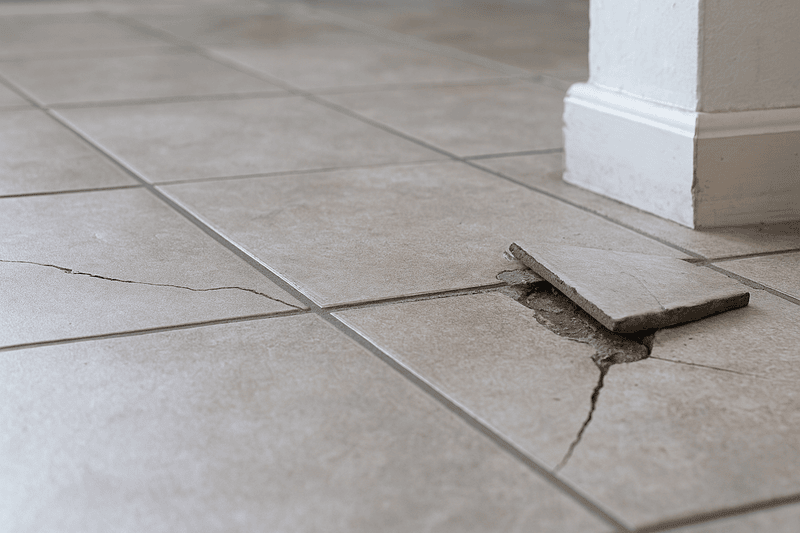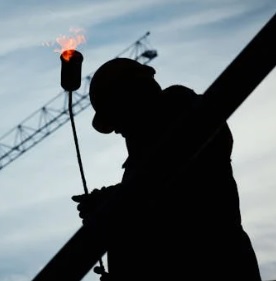
Tiles are a staple of modern Australian homes—from kitchens and bathrooms to patios and splashbacks. But when cracks, chips, or loosened grout start to appear, it’s easy to delay fixing them. After all, how much harm can one broken tile really cause?
Turns out, a lot more than you might expect. Beyond being unsightly, damaged tiles can compromise waterproofing, lower property value, and even pose safety risks. That’s why timely tile repair isn’t just about appearance—it’s about protecting your home from larger issues down the track.
Here’s what you need to know about identifying tile damage, why DIY fixes may not hold up, and when to call in the pros for lasting results.
Common Causes of Tile Damage in Aussie Homes
Tiles are tough, but they’re not invincible. Over time, they can wear out, especially in high-traffic or moisture-prone areas. Some of the most common causes of damage include:
- Heavy objects being dropped on floors.
- Foundation movement or subfloor shifts.
- Water damage leading to grout deterioration.
- Incorrect installation or adhesive use.
- Thermal expansion in sun-exposed outdoor areas.
Hairline cracks may not seem serious at first, but they allow moisture to seep in—which can lead to mould, tile lifting, or weakened waterproofing membranes underneath.
Why You Shouldn’t Ignore a Single Damaged Tile
A single cracked tile may look minor, but it can quickly lead to larger structural issues. Here’s what may happen if it’s left unrepaired:
- Water infiltration: Especially in bathrooms and laundries, this can rot the subfloor and lead to costly remediation.
- Trip hazards: Uneven or loose tiles increase the risk of injury.
- Spread of damage: Adjacent tiles can become compromised due to pressure or shifting.
- Pest attraction: Moist areas beneath tiles may invite insects or mould.
Fixing a few problem areas now may help you avoid an entire re-tiling job later.
Signs You Need Tile Repairs—Not a Full Renovation
You don’t always need to rip everything up and start fresh. In many cases, minor to moderate damage can be addressed through targeted repair. Watch for these signs:
- Small cracks or chips on one or a few tiles.
- Grout lines crumbling or missing in spots.
- Individual tiles lifting or sounding hollow when tapped.
- Water stains or dampness appearing near tiled surfaces.
If the damage is localised and your existing tiles are still in production or salvageable, it’s often far more affordable to engage professional tile repair services for homes and rentals than replacing an entire floor or wall.
The Risks of DIY Tile Repair (And Why They Often Don’t Last)
A quick YouTube tutorial may make tile repair seem straightforward—but the reality is that mismatched grout colours, poorly laid adhesive, and uneven replacement tiles are all too common with DIY attempts.
Common DIY pitfalls include:
- Incorrect tile or grout colour matching.
- Poorly mixed adhesives that don’t cure properly.
- Not allowing sufficient drying time.
- Creating more cracks during removal.
More importantly, you may accidentally damage waterproofing layers under bathroom or shower tiles, leading to hidden leaks. A job done improperly may end up being more expensive to correct.
Professionals offering tile repair services bring the tools, techniques, and tile-matching expertise needed to restore a seamless look—and maintain the surface’s longevity.
If you’re unsure whether your bathroom’s issues are cosmetic or structural, this BlogRip post on wet area warning signs outlines what to look for before it’s too late.
What Does a Professional Tile Repair Service Involve?
A thorough tile repair job begins with an assessment to understand the extent of the damage and the underlying cause. This may include:
- Replacing cracked, chipped, or stained tiles.
- Regrouting joints that are discoloured or missing.
- Sealing edges and grout lines to improve water resistance.
- Matching colour, texture, and pattern with existing tiles.
- Fixing loose tiles to prevent future shifting.
Experienced tradespeople know how to remove and replace tiles without damaging surrounding ones or the substrate underneath. That’s where professional tile repair services for homes and rentals offer long-term value.
Indoor vs. Outdoor Tile Repair: What’s Different?
Outdoor tiles are exposed to much harsher conditions—sun, rain, frost, and constant thermal cycling. As a result, issues like cracking, grout crumbling, and surface peeling tend to occur faster and may need specific treatments.
When repairing outdoor areas like patios or balconies, pros will assess:
- Whether moisture is trapped beneath tiles.
- If a flexible adhesive is needed to account for expansion.
- The use of weather-resistant sealants.
- The compatibility of replacement tiles with current slip ratings.
Outdoor tile jobs require different materials and techniques, so be sure to hire a provider familiar with both settings. If you want to learn more about how outdoor maintenance differs, check out this BlogRip article on exterior surface care.
Tile Repair in Rental Properties: Who’s Responsible?
In rental properties, the question of who handles repairs can sometimes be unclear. In general:
- Tenants are responsible for reporting damage and may need to cover accidental tile breakage.
- Landlords must ensure tiles are safe and functional, especially in wet areas.
For investment properties, regular inspection and minor maintenance may help prevent expensive disputes at end-of-lease. Hiring a business that offers professional tile repair services for homes and rentals may provide peace of mind for both parties.
How Much Does Tile Repair Cost in Australia?
Prices vary based on location, tile type, and the extent of damage. However, for basic tile replacement or regrouting, you can expect:
- Small repairs (1–3 tiles): from $120 to $250.
- Regrouting areas (per sqm): around $35–$60.
- Bathroom tile repairs involving waterproofing: from $300+ depending on severity.
For larger issues or multi-room jobs, most professionals offer free quotes. Getting a quote from a reputable provider ensures clarity and avoids unexpected add-ons.
When Replacement Is Better Than Repair
There are cases where full replacement is the smarter move. You may want to consider it when:
- A large percentage of the tiled surface is damaged or outdated.
- The original tiles are no longer available and cannot be matched.
- Subfloor or waterproofing systems have failed.
- You’re planning a broader renovation.
Even then, a qualified tile technician can assess whether partial repair is still an option and help avoid full replacement if unnecessary.
Final Thoughts: Don’t Wait Until It’s a Bigger Problem
Cracked, chipped, or missing tiles aren’t just a minor inconvenience—they’re often the early signs of water damage, structural wear, or hidden mould. The sooner you take action, the easier (and more affordable) it is to fix.
By working with professional tile repair services for homes and rentals, you get expert restoration that looks seamless and functions like new. Whether it’s a small kitchen splashback or a moisture-prone shower floor, expert repair may help you avoid long-term issues and protect the integrity of your home.

Leave a Reply